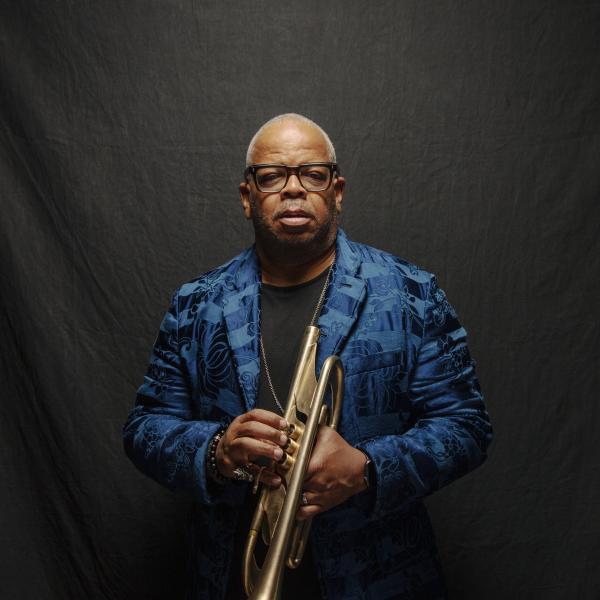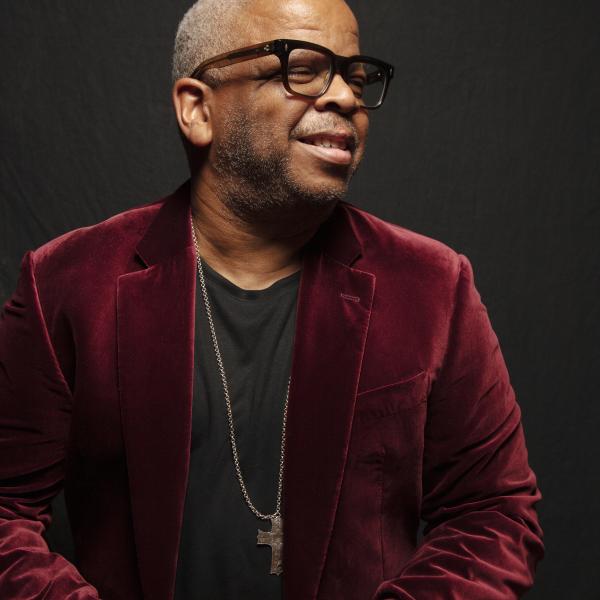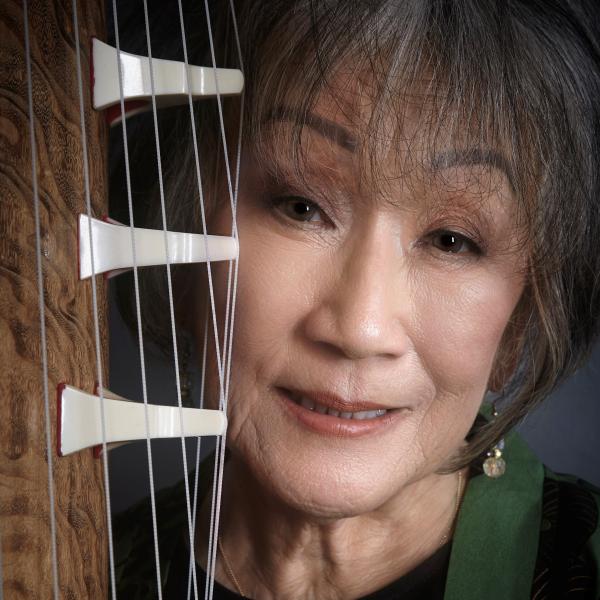Quick Study: October 17, 2024
Jo Reed: Welcome to Quick Study. I'm Josephine Reed. This is the monthly podcast from the National Endowment for the Arts, where we'll share stats and stories to help us better understand the value of art in everyday life. Sunil Iyengar is the pilot of Quick Study, and he's the Director of Research and Analysis here at the Arts Endowment. Good morning, Sunil.
Sunil Iyengar: Good morning, Jo.
Jo Reed: So what's on for today?
Sunil Iyengar: Well, I'd like to talk about a NEA research report that came out earlier this month. It's called 50 States of Arts Participation, and it looks at how different states vary in terms of the types of arts activities people like to do, whether attending arts events, personally creating or performing art, taking arts classes or lessons, reading literature, using devices to view or listen to artworks. You get the idea, or other ways of engaging with arts and culture.
Jo Reed: Sure, that sounds interesting. Where does the data come from?
Sunil Iyengar: So it's the Survey of Public Participation in the Arts, or the SPPA, which you've heard me talk about a few times before here. It's the largest nationally representative survey of arts involvement in the U.S. We conduct it with the help of the U.S. Census Bureau. The latest data come from 2022, but the analysis of state-level data is brand new.
Jo Reed: Okay, so the data is from 2022, but the analysis is new. So explain that.
Sunil Iyengar: I should just point out by saying that only rarely every five years or so do we get access to quality data about arts participation at the state level. So it takes us some time to actually go through the numbers at that geographic level, and we get the data about a year or so after the survey is completed. So in fact, we reported out earlier this year the results of the main SPPA, but now we're digging into the state data. As you can imagine, learning how people from different geographic areas take part in the arts can provide important tools for arts administrators, funders, and cultural policy makers.
Jo Reed: Okay. Tell me what you found. Wait, let me guess. Can I be obvious? States like California and New York with big cities, lots of museums and performing arts centers, that's also where you saw the most art goers?
Sunil Iyengar: Actually, not quite. In fact, our data showed that in 2022, higher than average attendance was clocked by seven states. Utah, Vermont, Nebraska, North Dakota, Indiana, Wisconsin, and Minnesota. Per capita, Washington DC also drew more arts participation than most states. Just to give you a basis for comparison, Jo, 38% of all Americans attended at least one live arts performance in 2022. But in Utah, the rate was 62%, in Vermont 54%, and in Nebraska 53%. When it comes to visiting art museums and galleries, we know that 18% of all Americans did this back in 2022. But Massachusetts here outstripped the national rate, with 27% of people from that state going to art museums. Vermont and DC were again at the head of the pack, with museum visitation rates of 32% and 41% respectively.
Jo Reed: Do we know why these states exceeded the national rates? We're talking about visual and performing arts attendance?
Sunil Iyengar: Well, I wish you could give an easy answer, but no, the data don't permit us to get into the drivers for arts attendance in those particular states. And so that's where consulting state arts agencies, of course, the NEA partners with state arts agencies around the country, and other arts and cultural administrators within those states, doing that might prove helpful to get a lay of the land for the regional dynamics affecting arts behaviors in a given year. So it's hard for us to get a handle on that at the national level. But the survey does let us dig deeper into specific art forms. So when I referred to performing arts attendance a while ago, if we were to peel back the onion, we'd find higher rates of theater going in Nebraska, Wisconsin, and Montana, where well over 20% of adults attended stage plays or musicals compared to the national rate, which was 12%. I should add that's excluding high school or elementary school performances. So if you will, professional or community-based arts experiences. Then when you look at people attending dance performances, you get high rates in Vermont yet again, 13% of people from that state viewed this art form live in person at least once in the course of a year. And South Dakota, with 16% of people attending dance. These rates are roughly three times higher than the share of adults nationwide who attended dance events. That was only 5%. And then for classical music, we see that Massachusetts residents went to these kinds of concerts at a rate at least twice the rate of American adults in general. This was also true of DC residents when it came to jazz music attendance compared with the national rate. With Latin, Spanish, or salsa music concerts, New Mexican audiences attended three times as much as the nation as a whole.
Jo Reed: And you also mentioned Indiana.
Sunil Iyengar: Good one, you were listening. Well, when we ask about other types of live performing arts attendance, that is types we do not ask about on the survey, these may have been rock or pop concerts, rap or hip hop, or even comedy shows, circuses, or magic shows. That's a kind of lump all category. We find that 37% of Indiana residents went to one of these types of events in the last year compared to 21% of adults in general. In Michigan, another Midwestern state, the rate was also high, 34%. And out East in Delaware, it was 35%. Jo, it's interesting to me that among the states with the lowest rates of performing arts attendance are the southern states, Mississippi and Alabama. But you also find New York hanging out there.
Jo Reed: Is there a reason why? Did you find out why that's so? I have my own thoughts.
Sunil Iyengar: Yeah. So New York came in with lower than average rates of performing arts attendance in 2022. So something to consider is the timing of the survey. This was done in July 2022, and respondents were asked to report on their arts engagement patterns over the past year. And as we know, that coincided with a time when many New York performing arts venues were still closed, unlike maybe in some other states. So this factor may have depressed the rate of reported arts attendance in New York. That's one idea I have. Then there's movie going. So Jo, you're correct when you asked about the coast. California out on the West Coast had one of the highest rates of movie audiences. 52% of people from this state went to a movie over the past year compared with 43% of all adults. But in Kansas, that rate was even higher, 65%. And in Texas, it was 54%.
Jo Reed: You know, what I wonder about: I'm back to New York. It costs a fortune to go to a performing arts event. So I wonder if finances at all were factored in, or if you can see the difference in cost and how that can motivate or depress attendance.
Sunil Iyengar: You're absolutely right. And you know, when I just sort of in passing, didn't really get into it much, but referred to a couple of southern states that have low yield in economies are often maybe more challenged to spend time, for people in the state to spend time going to some of these kinds of events. And here we're only talking about arts attendance, I should add, right now. And of course, arts attendance can come in a variety of ways. It could be in a club, it could even be in a place of worship. It could be in a performing arts center. We don't know from the data just yet, but a lot of it, of course, is very costly for the average resident. And so maybe it's possible that some of the states where you're seeing much lower rates of participation when it comes to attendance, it may be because they're high cost offerings all around and they don't really have the discretionary funds to go out as frequently. So yes, that is very much a factor. And yes, of course, in New York, if you think of the city, of course, where much of the theater is, you're going to see that.
Jo Reed: And what about people making art of their own? Was the survey able to look at that at all?
Sunil Iyengar: Yes. So in fact, I know I spent a lot of time talking about arts attendance, so I probably can't get into individual art forms here. But in aggregate, states that outperform the entire U.S., outperform, bad pun intended, were the states that did particularly well in terms of arts creation were Wisconsin, Maine, Montana, Vermont, Nebraska, Utah, Oregon, Washington State and Ohio. All these states had above average shares of residents who personally created or performed art. So you can go into the report and it tells you about very specific art forms, but just to take the top two of these states, let's start with Wisconsin, where the rate of arts creation in the course of a year was 73%, versus 52% of the U.S. as a whole. Wisconsin had an especially strong showing with people doing dance, taking photographs for artistic purposes and making visual art in general. And Maine, where 71% of people made their own art, included a lot of folks working with textiles, weaving, crocheting, quilting or doing needlepoint, knitting or sewing.
Jo Reed: Okay, I know we need to go, but you had a recent blog post where you wrote about the national rates of literary reading. Can you tell what's going on the state level with that?
Sunil Iyengar: Yes. Well, as with many of these indicators of arts participation, Vermont rated pretty high, must be something in the water. 60% of that state's residents read novels or short stories in the past year, compared with only 38% of Americans. In Nebraska, it was 56%. In Montana, 53%. And Washington State, 51%. DC also did pretty well, by the way, with just over half, or 52% reading novels or short stories in the course of the year. To me, what's more striking are the states that fall below the already low rates of fiction reading in the US. So I was surprised: California, 32%. It's below the national rate of 38% again. And further down, Mississippi, Florida, Georgia, and Hawaii. Jo, in the same blog post you referenced, I also plugged a series of essays that we commissioned from various arts and cultural leaders and practitioners. We asked them to reflect on the survey results and what they mean for the future of the arts. Today's listeners can go to arts.gov and on the research page, find a link to these essays, just as they can find this report here, “50 States of Arts Participation.”
Jo Reed: Nice! You got that in before we signed off.
Sunil Iyengar: Yes, I'm learning from the best.
Jo Reed: Thank you, Sunil. And I will talk to you next month. That was Sunil Iyengar. He's the Director of Research and Analysis here at the National Endowment for the Arts. You've been listening to Quick Study. The music is We Are One from Scott Holmes Music. It's licensed through Creative Commons. Until next month, I'm Josephine Reed. Thanks for listening.
In this episode of Quick Study, we look at a new NEA research report, 50 States of Arts Participation, to learn how patterns of art-going and art-making vary by state.




